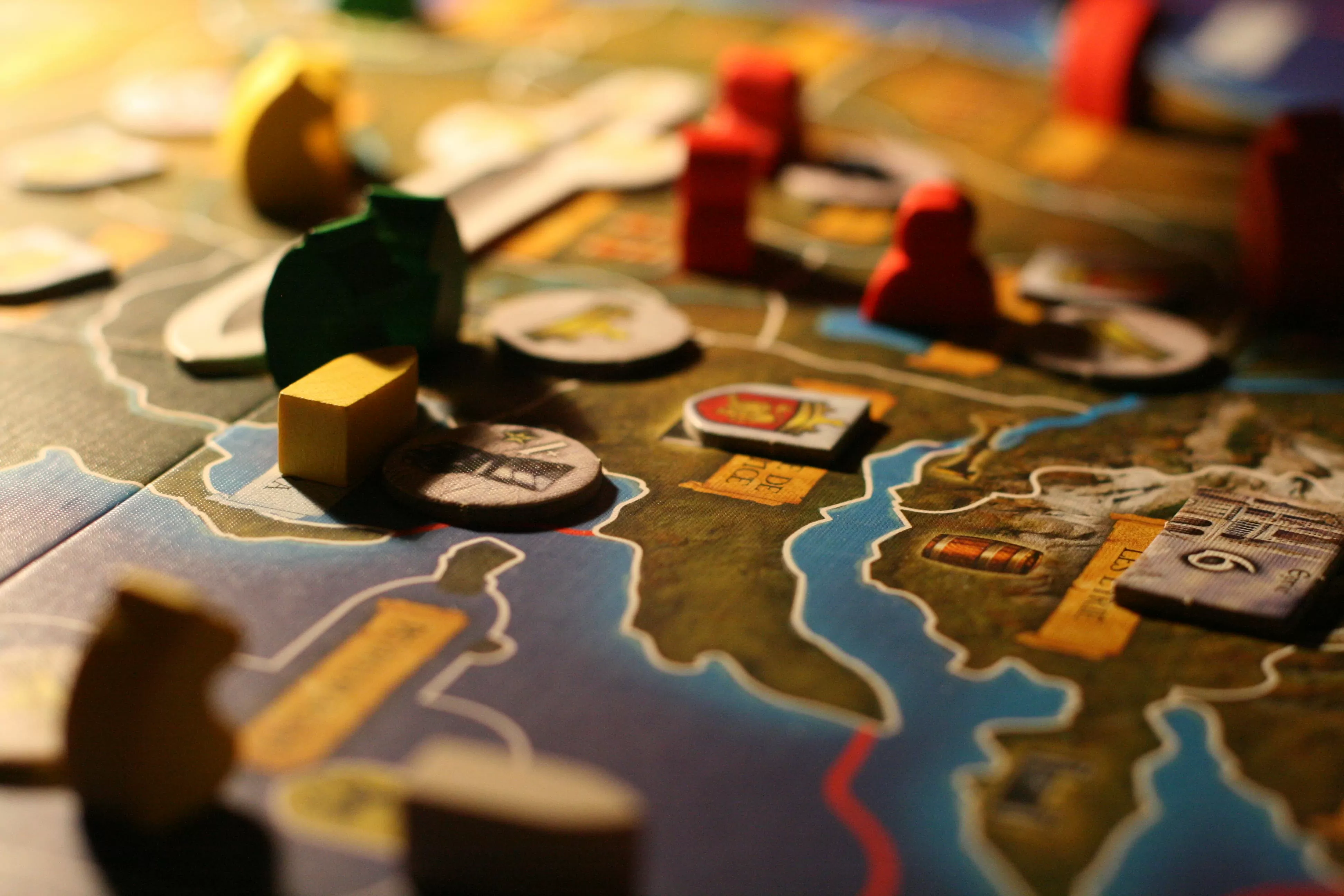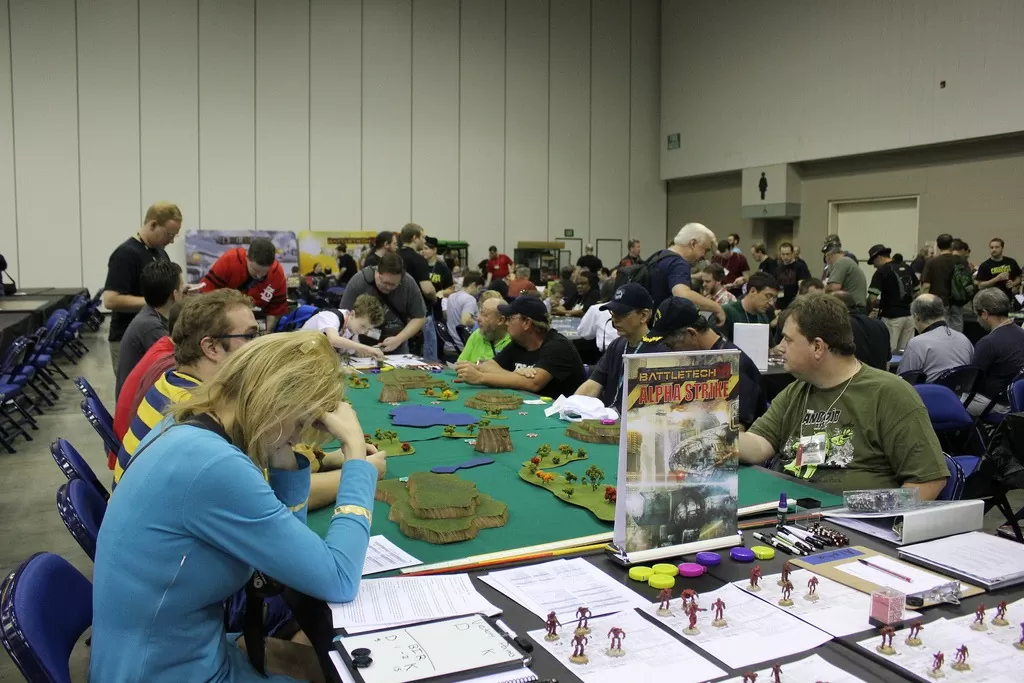PrintNinja - online printing made easy for creators
Selling Your Game Post-Kickstarter: 13 Essential Next Steps
After you fund your game, you’ll have to figure out how to sell it post-Kickstarter. Don’t worry – we’ve provided all the information you need to know to sell your game online or in stores.
You put a lot of work into your Kickstarter campaign, and it paid off! You met your funding goal, but now it’s time to make sure your game gets into the hands of new audiences. Depending on your goals and strengths, you can take direct sales into your own hands, find partnerships with other companies to sell for you, or both. Here are things to consider when planning your game’s post-Kickstarter life.

Selling your game post-Kickstarter via your page
Your Kickstarter page continues to exist after your Kickstarter campaign ends, and will rank high in Google results for your game’s title. Be sure that any new visitors will know where they can find your game after the campaign has closed.
Once you hit your funding deadline, though, you won’t be able to edit your Kickstarter page. Update it on the last day of your campaign to include a link to your online store and landing page so that that future visitors can find your game and updated information anytime.
Setting Up a Web Store
Make your game available on your website as soon as your campaign ends via a web store. Even if you can’t begin selling copies of your game immediately, set it up to accept pre-orders, and link to it from your landing page, Kickstarter, and social media. [Click to Tweet]
There are a number of simple, inexpensive online e-commerce solutions you can use to set up your store:
-
- Shopify is known as the best e-commerce platform for independent sellers. Most site-building tools have Shopify plugins, or you can use Shopify’s tools to build an entire website.
- If you’re already using Squarespace for your landing page, it’s simple to add a store with their built-in e-commerce tools.
- WooCommerce is a WordPress plugin that can transform any WordPress website into a selling machine. Like WordPress, WooCommerce itself is free to use, but you may need to pay for crucial plug-ins for payment processing.
To find the solution right for you, check out Ecommerce-Platforms.com’s comparison chart.
Spread the Word
After your Kickstarter closes, you still need a way to keep getting the word out about your game.
Keep soliciting reviews from game review websites and keep looking for opportunities to work with bloggers and journalists. List your product on sites that showcase crowdfunded products, like Outgrow.me and Amazon Launchpad. Remember that your story doesn’t stop after the Kickstarter ends, and you can keep pitching articles to local journalists and bloggers on your game, your Kickstarter campaign, and new projects.
Get Your Game Into Stores
Online sales are great, but they’re not the only channel available to you. If you have a healthy stock of games, you’ll want to get them into stores and in front of potential players.
Retail Packaging Standards
Retailers have packaging standards that your game needs to meet. Make sure your packaging includes:
-
-
- Barcode
- Icons for play time, number of players, and ages
- Game designer’s name
- Licensing and credits
- Images of all pieces included in the game box
- Barcode
- Legal Information (Copyrights, Made in China, Child Safety)
-
Pricing
Stores have limited shelf space, and they want to make a reasonable profit on any game they stock. You need to set an MSRP (Manufacturer’s Suggested Retail Price) that will work for both you and the stores.
Set it carefully, because a too-low MSRP can make it hard to turn a profit or recoup your investment. Conversely, a too-high MSRP can make it challenging to sell copies. Research similar games in your category to make sure your MSRP is reasonable and be sure you know exactly how much money you need to make on each copy.
For most board games, the MSRP is priced at five times the manufacturing cost. So, if your game costs $10 to print, your MSRP will be $50. Distributors and retailers will then purchase your game at a percentage of the MSRP—40% of MSRP for distributors, 50% for retailers—and sell the game at MSRP. For example, if your MSRP is $50, a retailer will purchase it from you for $25 and sell it for $50. You’ll make a profit of $15, and the retailer will make a profit of $25.
Trial Periods
Most retailers will offer you a trial period to see how well your game does in their store. When your game hits the shelves, announce to your fans (or friends and family) asking them to purchase your game at these locations to reduce the risk that the retailer will reject your game.
Preparing to Pitch Your Game
Because you’ve already gone through a successful Kickstarter campaign, you’re well-armed to pitch your game to retailers and distributors. Practice giving a short pitch that incorporates your selling features, details about your game, and the positive feedback you’ve gotten from players. Know the key statistics, including MSRP and current sales, like the back of your hand.
It can’t hurt to get your name in their head before you pitch. Encourage your fans to ask for your game at local retailers.
Find a Distributor
There are two ways to get your game into stores: working directly with stores, or going through a distributor. Distributors like Southern Hobby and Alliance Game Distributors have relationships with retailers across the country, and take care of warehousing, packing, shipping, and invoicing orders. Stores like working with them because they’re reliable and professional, and game makers like working with them because they can get games into more stores in more locations.
Read as much information as you can about a distributor before approaching them. Make sure that your game is an appropriate fit with other games that they carry and that you can meet all of their terms. For example, if they have a required minimum of available units that you can’t meet, they won’t be interested in carrying your game.
Work Directly with Retailers
You don’t have to go through a distributor to get your game on shelves. By working with retailers directly, you may have to work harder for each sale, but you can build relationships that are both emotionally and financially rewarding.
Local Game Stores
Start with local game stores. Connecting with your local game shop builds community and can cut down on shipping costs if you deliver copies in person. If you’re not already familiar with the store, visit first to make sure it’s the right fit for your game.
Either in person or over the phone, ask to schedule an appointment with the store’s buyer to show them your game. When meeting with the buyer, be sure to have your elevator pitch down, be professional and polite, and be ready to leave a copy of your game with them. If they don’t say yes on the spot, ask them if you can follow up in a week. Keep in mind that store owners and managers are very busy. Try to be direct about your needs while being respectful of theirs.
Not-so-local Game Stores
You can’t walk into every store in the country, so it’s important to do background research and be as personal as possible with your sales pitch. Contact stores by email, then follow up with a phone call or a handwritten postcard—perhaps one with your game’s art printed on the front?
If you have fans or friends in other cities, enlist them as your street team. Mail them a stack of promotional postcards or fact sheets about your game, and ask them to visit their local game stores. Instruct them on the key points you want them to convey, and be sure to incentivize them with something special like a signed piece of original art. Follow up with the stores via email or over the phone.
Events and Conventions

Stores and distributors like it when you take an active role in promoting your game, because it shows that you’re committed to making sure it sells. Audiences like meeting game creators, and are more likely to buy a game from a member of their community. Schedule a demo day at your local game store, or if you’re planning on visiting a city, contact shops in advance and schedule a demo or two.
Gaming conventions like Gen Con are great places to spread the word about your game, whether you’re going as an attendee or paying for a booth. Most conventions devote some space to open gaming tables where you can demonstrate your game. You can also meet other game makers, game publishers, and distributors. Come stocked with business cards, fact sheets, copies of your game, and your elevator pitch.
Game Publishers and Beyond
Some crowdfunded games have been picked up by game publishers for the next phase of their life. Fully-realized games save publishers time and money, and they feel secure knowing there’s already an audience for the game.
Like distributors, publishers each have their own interests and guidelines for submitting your game, so be sure to research them well. Randy Hoyt, a small, independent publisher that runs Foxtrot Games, has good information on submitting games on his informative site.
Selling your game can be hard work, but it’s worth the investment to get your game out into the world. With creativity, planning, and dedication, you can build a network of fans, partners, and businesses who help your game find its way into homes far and wide.
Download this content as an Ebook and read on your tablet.